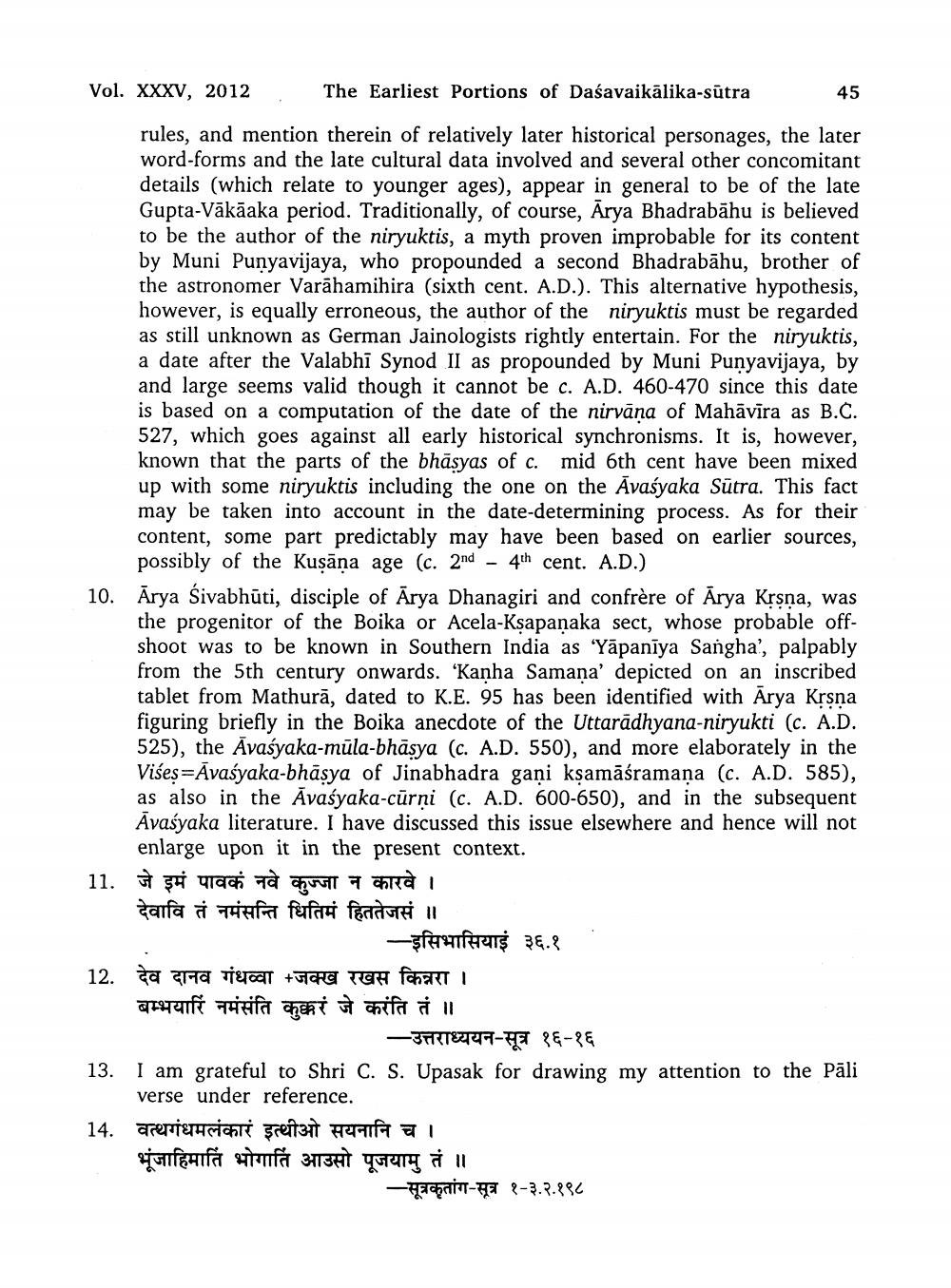________________
Vol. XXXV, 2012
The Earliest Portions of Daśavaikālika-sūtra
45
rules, and mention therein of relatively later historical personages, the later word-forms and the late cultural data involved and several other concomitant details (which relate to younger ages), appear in general to be of the late Gupta-Vākāaka period. Traditionally, of course, Arya Bhadrabāhu is believed to be the author of the niryuktis, a myth proven improbable for its content by Muni Punyavijaya, who propounded a second Bhadrabāhu, brother of the astronomer Varahamihira (sixth cent. A.D.). This alternative hypothesis, however, is equally erroneous, the author of the niryuktis must be regarded as still unknown as German Jainologists rightly entertain. For the niryuktis, a date after the Valabhi Synod II as propounded by Muni Punyavijaya, by and large seems valid though it cannot be c. A.D. 460-470 since this date is based on a computation of the date of the nirvana of Mahāvīra as B.C. 527, which goes against all early historical synchronisms. It is, however, known that the parts of the bhāsyas of c. mid 6th cent have been mixed up with some niryuktis including the one on the Avasyaka Sūtra. This fact may be taken into account in the date-determining process. As for their content, some part predictably may have been based on earlier sources,
possibly of the Kuşāņa age (c. 2nd - 4th cent. A.D.) 10. Arya Śivabhūti, disciple of Ārya Dhanagiri and confrère of Arya Krsna, was
the progenitor of the Boika or Acela-Ksapanaka sect, whose probable offshoot was to be known in Southern India as 'Yapanīya Sangha', palpably from the 5th century onwards. "Kanha Samana' depicted on an inscribed tablet from Mathurā, dated to K.E. 95 has been identified with Arya Krsna figuring briefly in the Boika anecdote of the Uttarādhyana-niryukti (c. A.D. 525), the Avasyaka-mula-bhāsya (c. A.D. 550), and more elaborately in the Višes=Āvasyaka-bhāsya of Jinabhadra gani ksamāśramana (c. A.D. 585), as also in the Avaśyaka-cūrņi (c. A.D. 600-650), and in the subsequent Avasyaka literature. I have discussed this issue elsewhere and hence will not
enlarge upon it in the present context. 11. It se uradi na wall 7 cardi देवावि तं नमंसन्ति धितिमं हिततेजसं ॥
-FAHRTS BĘ.? देव दानव गंधव्वा +जक्ख रखस किन्नरा । बम्भयारिं नमसंति कुक्करं जे करंति तं ॥
-उत्तराध्ययन-सूत्र १६-१६ 13. I am grateful to Shri C. S. Upasak for drawing my attention to the Pāli
verse under reference. 14. aperterrieri greitai peraira al पूंजाहिमाति भोगाति आउसो पूजयामु तं ॥
Fani-E -3..882




